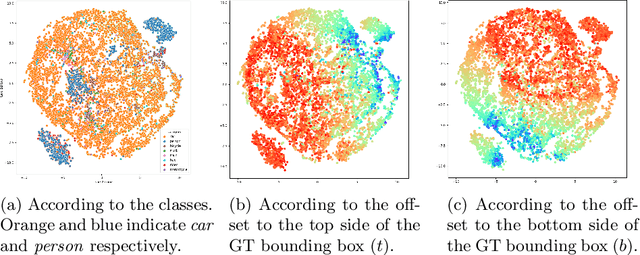Unsupervised Domain Adaptation for One-stage Object Detector using Offsets to Bounding Box
Paper and Code
Jul 20, 2022


Most existing domain adaptive object detection methods exploit adversarial feature alignment to adapt the model to a new domain. Recent advances in adversarial feature alignment strives to reduce the negative effect of alignment, or negative transfer, that occurs because the distribution of features varies depending on the category of objects. However, by analyzing the features of the anchor-free one-stage detector, in this paper, we find that negative transfer may occur because the feature distribution varies depending on the regression value for the offset to the bounding box as well as the category. To obtain domain invariance by addressing this issue, we align the feature conditioned on the offset value, considering the modality of the feature distribution. With a very simple and effective conditioning method, we propose OADA (Offset-Aware Domain Adaptive object detector) that achieves state-of-the-art performances in various experimental settings. In addition, by analyzing through singular value decomposition, we find that our model enhances both discriminability and transferability.
 Add to Chrome
Add to Chrome Add to Firefox
Add to Firefox Add to Edge
Add to Edge